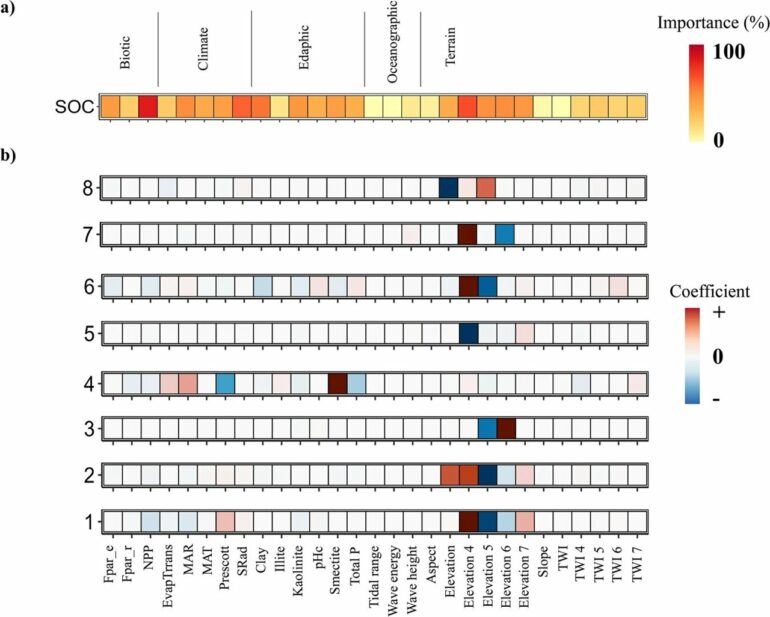New Curtin University research has identified the most carbon-rich soils in Australia are in areas that are most threatened by human activities and climate change, including Eucalypt and mangrove forests, and woodland and grassland areas that cover large parts of the country’s interior.
Lead researcher Dr. Lewis Walden from Curtin’s Soil & Landscape Science in the School of Molecular and Life Sciences said the findings highlighted the need to protect key terrestrial and coastal marine ecosystems, which play an important contributing role in national strategies to mitigate climate change.
“Using multiscale machine learning, we mapped the carbon storage of soils across Australia and found the entire continent holds a total of 27.9 gigatonnes, or billion metric tons, of carbon in the top 30cm of the soil, which is equivalent to around 700 times Australia’s total annual electricity emissions,” Dr. Walden said.
“Of this amount, 27.6 Gt of was in terrestrial ecosystems, with the remaining 0.35 Gt in coastal marine or ‘blue carbon’ ecosystems.”
“We also found climate and vegetation were the main drivers of variations in carbon storage for the continent as a whole, while at a regional level this was determined by ecosystem type, the elevation and shape of the terrain, clay content, mineralogy and nutrients.”
“Eucalypt and mangrove forests store the most carbon per unit area, but woodland and grasslands store more carbon in total, due to the vast areas across Australia they cover.”
Professor Raphael Viscarra Rossel, who leads Curtin’s Soil & Landscape Science Research Group said these carbon-rich ecosystems were known to be those most threatened by human activities and climate change.
“Our findings suggest these are essential ecosystems for conservation, preservation, emissions avoidance and nature-based climate change mitigation,” Professor Viscarra Rossel said.
“These ecosystems are important as sources of products and food, and in the case of blue carbon ecosystems for providing coastal protection against storm surges and erosion, and as fisheries habitats that provide breeding grounds and nurseries for many species of marine life.”
“Understanding the variation and drivers of carbon storage will help manage those ecosystems better and inform national carbon inventories and environmental policy.”
Dr. Walden is a Research Associate in Curtin’s Soil and Landscape Science Group.
The research used Terrestrial Ecosystem Research Network (TERN) infrastructure. Digital maps of Soil Organic Carbon stocks are available for download via the TERN data portal.
Published in Communications Earth & Environment, the research is titled “Multi-scale mapping of Australia’s terrestrial and blue carbon stocks and their continental and bioregional drivers.”
More information:
Lewis Walden et al, Multi-scale mapping of Australia’s terrestrial and blue carbon stocks and their continental and bioregional drivers, Communications Earth & Environment (2023). DOI: 10.1038/s43247-023-00838-x
Citation:
First soil map of terrestrial and blue carbon highlights need for conservation (2023, June 1)



